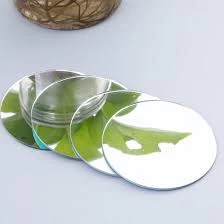

The Benefits and Aesthetics of Green Reflective Glass
In the world of architecture and design, the materials used can significantly influence not only the appearance of a building but also its environmental impact. One of the most exciting innovations in this field is green reflective glass. This material, characterized by its unique aesthetic and performance qualities, has become increasingly popular in modern architecture. This article explores the various advantages of green reflective glass and its applications in contemporary design.
Green reflective glass is essentially a type of high-performance glass that incorporates a green tint into its composition, combined with a reflective coating. This combination serves multiple purposes it enhances the visual appeal of buildings, improves energy efficiency, and provides privacy without compromising natural light. The distinctive green hue adds a unique character to facades and can complement a wide range of architectural styles, making it a preferred choice for many architects and designers.
One of the most significant benefits of green reflective glass is its energy efficiency. The reflective properties of the glass minimize the amount of solar heat gain, which is particularly advantageous in warm climates. By reflecting excess sunlight, buildings can significantly reduce their reliance on air conditioning systems, leading to lower energy consumption and reduced utility bills. This energy efficiency contributes not only to cost savings for building owners but also to a decrease in greenhouse gas emissions, supporting global sustainability efforts.
Furthermore, the green tint in the glass helps to reduce glare, creating a more comfortable environment for occupants. This characteristic is particularly beneficial for office buildings and commercial spaces where glare can be distracting and detrimental to productivity. By providing a more pleasant working environment, green reflective glass can ultimately contribute to the well-being and efficiency of workers.

In addition to its functional benefits, green reflective glass also enhances the aesthetic appeal of a building. Its dynamic look can change throughout the day, reflecting the colors of the sky and its surroundings. In urban settings, this glass can harmonize beautifully with natural landscapes, blending the built environment with the environment around it. The reflective quality can also create striking visual effects, particularly during sunset or sunrise, when natural light interacts with the surface of the glass. This aesthetic versatility makes it an ideal choice for a variety of design applications, from modern skyscrapers to residential homes.
Privacy is another essential aspect to consider in contemporary architecture, and green reflective glass offers a viable solution. While allowing natural light to filter into spaces, the reflective coating ensures that the view from outside is obscured, giving occupants a sense of security and seclusion. This quality is particularly valued in urban environments, where buildings are often closely situated together.
Moreover, the durability of green reflective glass is noteworthy. It is designed to withstand harsh weather conditions, including heavy rain, wind, and temperature fluctuations. This resilience ensures that buildings will maintain their aesthetic appeal and energy efficiency over many years, making it a worthwhile investment for developers and property owners alike.
In conclusion, green reflective glass exemplifies the seamless integration of aesthetics and functionality in modern architecture. Its energy-efficient properties, glare reduction capabilities, privacy enhancement, and stunning visual appeal make it a favorable choice for various construction projects. As sustainability becomes an increasingly pressing concern, materials like green reflective glass stand out as innovative solutions that contribute to a greener future while enriching the architectural landscape. As we embrace the possibilities of modern materials, green reflective glass will undoubtedly continue to play a pivotal role in shaping our built environment.